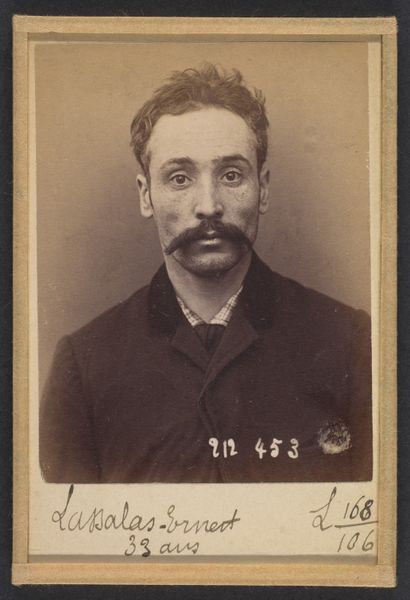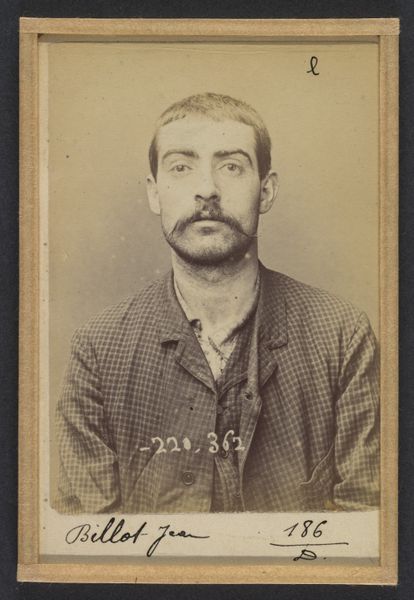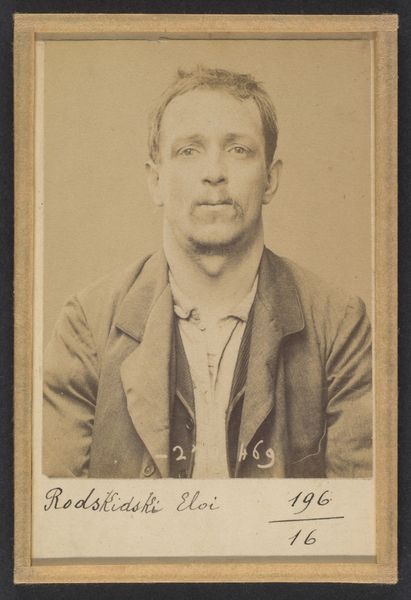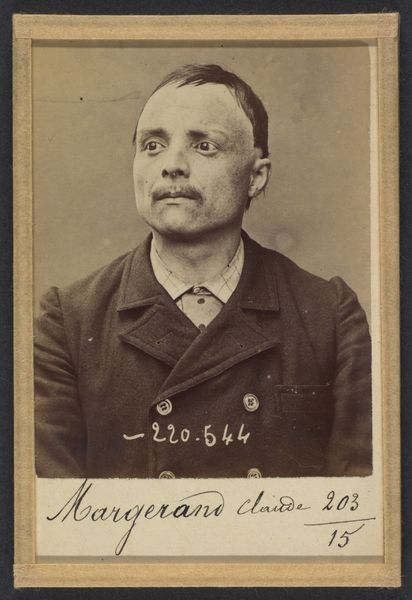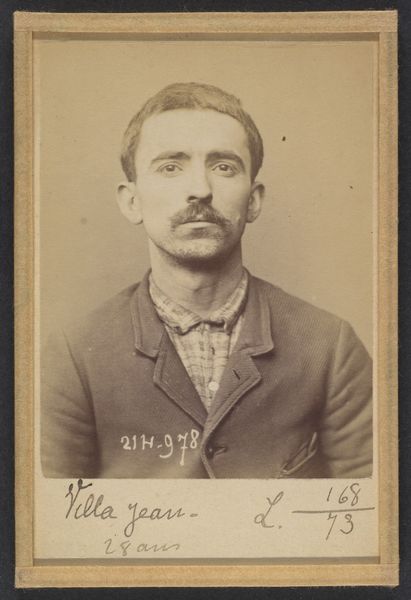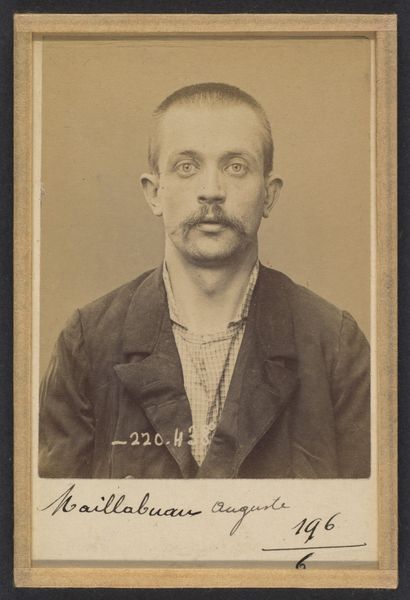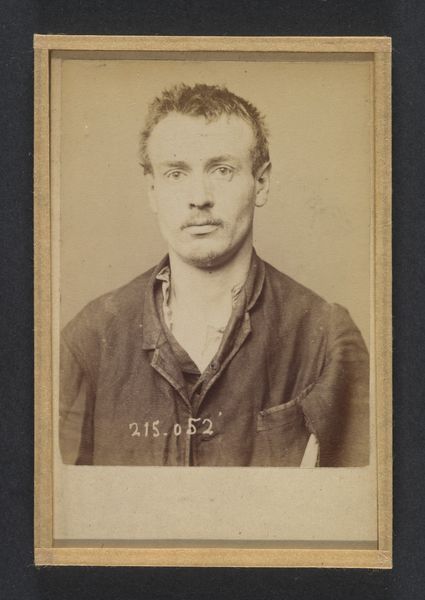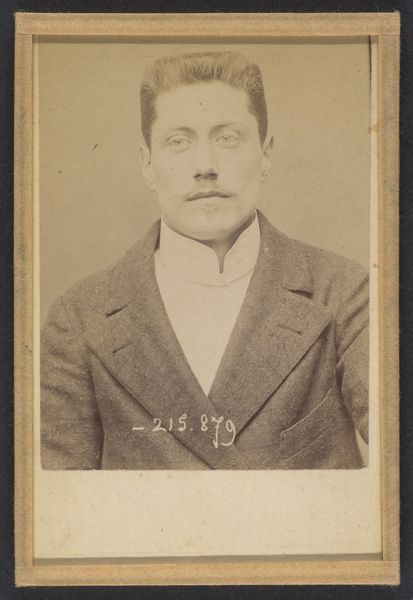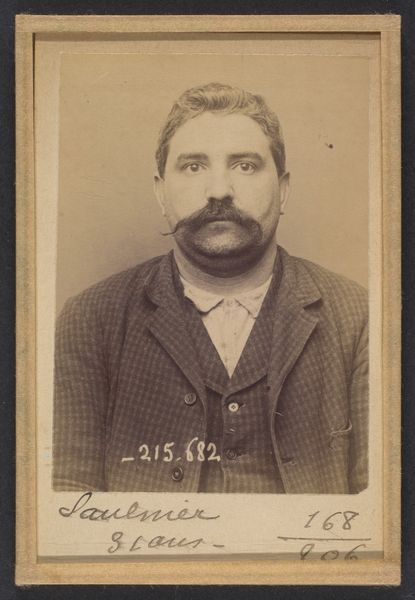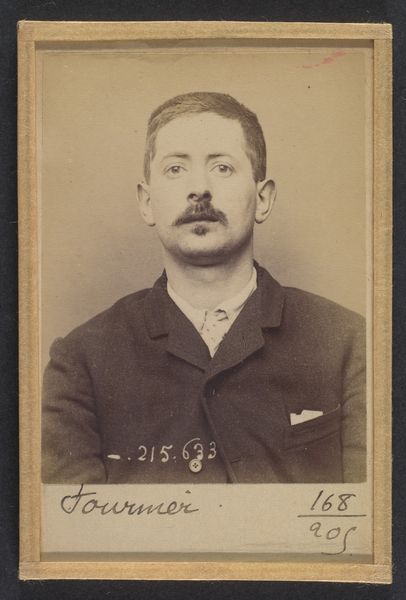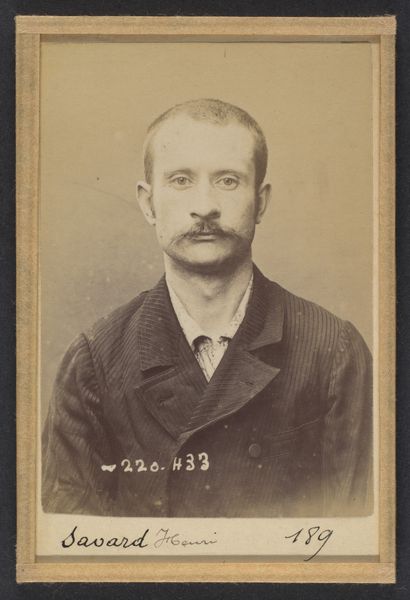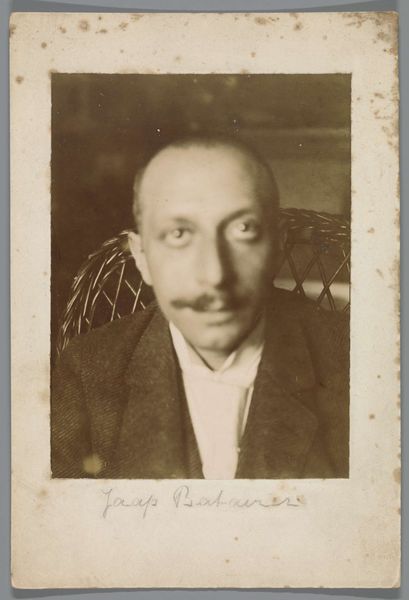
photography, gelatin-silver-print
#
portrait
#
african-art
#
contemporary
#
photography
#
gelatin-silver-print
#
realism
Dimensions: image/plate: 12.7 × 10.1 cm (5 × 4 in.)
Copyright: National Gallery of Art: CC0 1.0
Curator: Deborah Luster created this arresting portrait titled "Angola, Louisiana" between 1998 and 2002, employing the gelatin-silver print technique. The effect is strikingly reminiscent of an antique photograph. Editor: It absolutely vibrates with stillness. There’s something so intensely personal and yet…distant? The eyes hold you, but the sepia tone almost casts it in memory. Like a forgotten tintype resurrected from an attic. Curator: It's a fascinating study in the way Luster re-contextualizes photographic portraiture. Angola refers to the Louisiana State Penitentiary, infamously known for its history and racial demographics, factors which greatly informed Luster’s focus on inmates in carceral settings. What resonates particularly strongly is the echo of older systems of photographic documentation employed by institutions for social control. Editor: That's chillingly put. Knowing the historical weight, it amplifies the quiet dignity I see in his expression, like a stubborn refusal to be fully defined by circumstance. He holds…something…what is it? Like a piece of paper, but he almost presents it. Is he reclaiming narrative control in that moment? Curator: Perhaps. That ambiguous white card certainly adds a layer of complexity; it could signify legal documents, identification, or a personal note, forcing viewers to confront institutional transparency. His quiet stance could read either defiance or resignation – both plausible. Luster purposefully eschews explicit narrative markers, preferring to present open ended interpretations for those depicted and for the facilities which keep and maintain them. Editor: Right. It’s that push-and-pull feeling. The contemporary and the historical colliding. Makes you really pause and wonder about visibility, about whose stories get framed—and how. Even after walking away, I feel this portrait's afterimage, questioning the lines between history and how we perceive each other in the now. Curator: Absolutely, the work stays with you long after you see it. It's this potent mixture of individual dignity, quiet protest, and unsettling historical undercurrents that mark the photograph as particularly poignant.
Comments
No comments
Be the first to comment and join the conversation on the ultimate creative platform.

